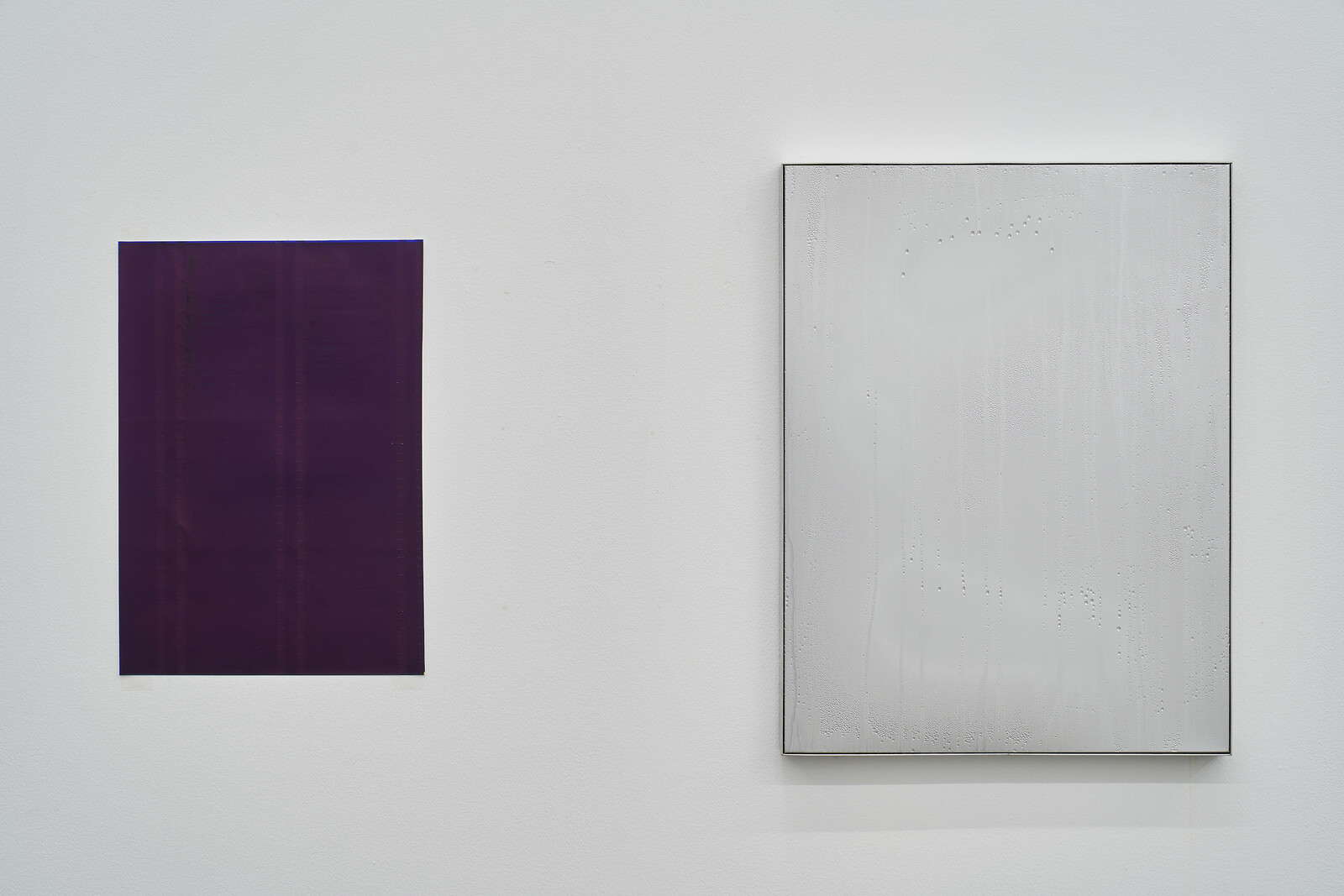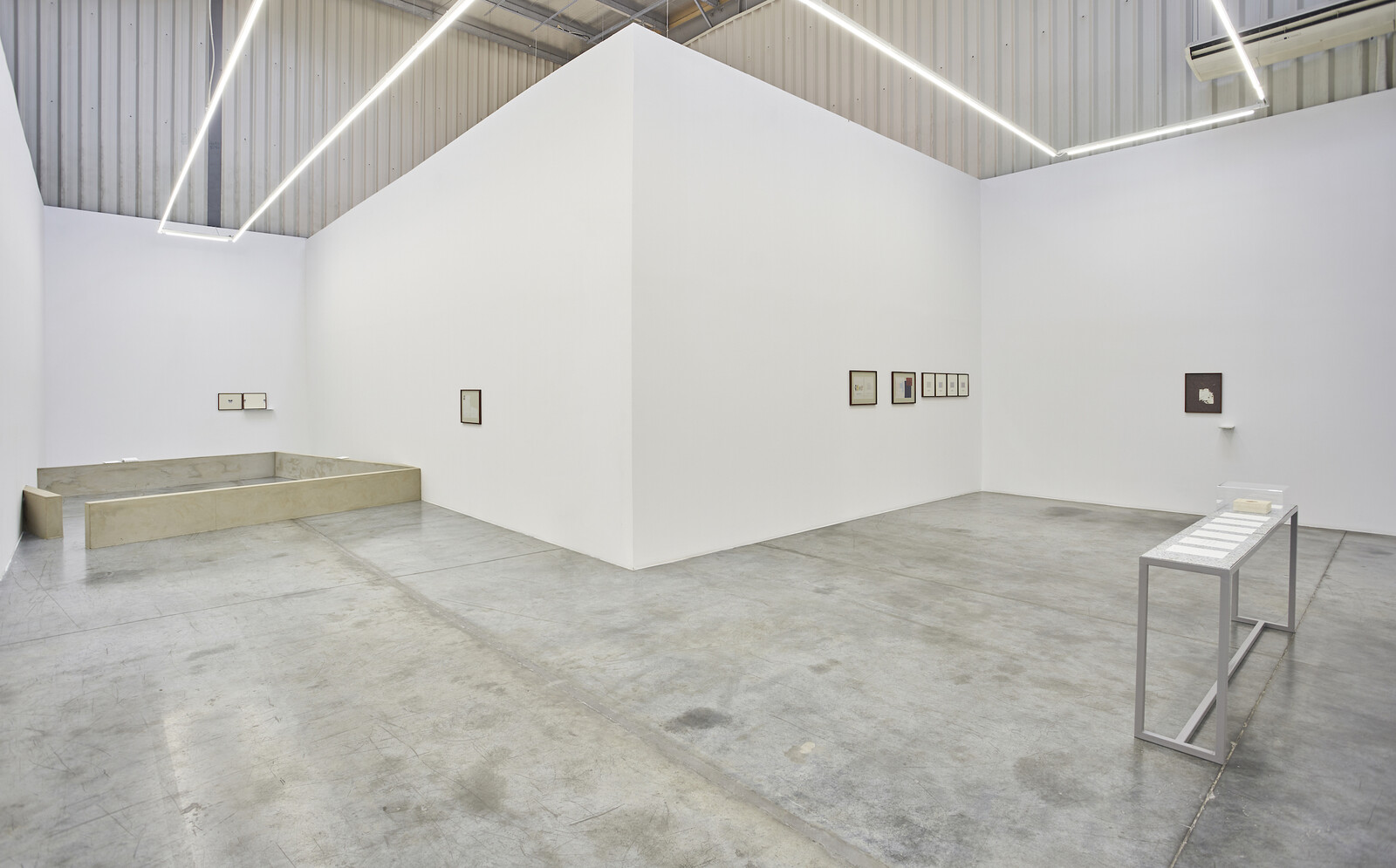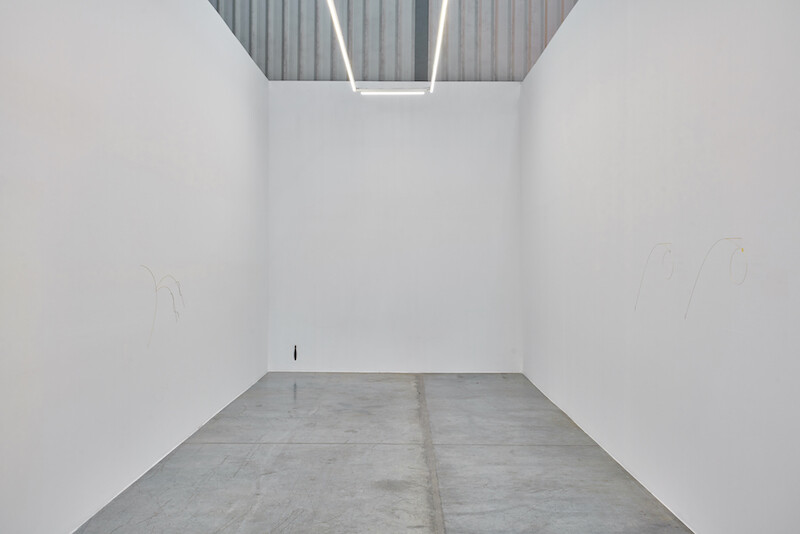Categories
Subjects
Authors
Artists
Venues
Locations
Calendar
Filter
Done
June 25, 2021 – Review
Caline Aoun’s “Sedimentary Matters”
Rahel Aima

Summer, muggy and punishing. In another city we might rely on our bodies to index its various accumulations: sunlight, sweat, melanin. Here, we use our cars. Steering wheels and leather seats that scald palms and thighs and—I had forgotten until I found myself hurtling down the highway unable to see—windows that fog up with the contrast between the hot, soupy air outside and our blessedly air-conditioned interiors. Since moving back to Dubai from Brooklyn earlier this year, I’ve been thinking a lot about terroir. What would work that reflects these atmospheric conditions, the filmy dust and sticky heat, look and feel like?
In Caline Aoun’s “Sedimentary Matters,” the uber-minimalist gallery is recast as an alluvial plain. There’s a rare sense of overflow and sensuous excess that overwhelms the space’s usual affective straitjacket. Things accrete into a material typology: ink, shadows, humidity, and the ghosts of all the other shows that have happened there. Upon entering the space, viewers encounter Condensations of the Invisible Space (all works 2021), a machine placed upon a high, spindly table with attached piping that goes through the wall. Those more mechanically literate might identify a fridge and compressor parts. On the other side is an …
October 24, 2019 – Review
Fazal Rizvi’s “How do we remember?”
Murtaza Vali

From Siegfried Kracauer to Roland Barthes, a photograph of a maternal figure in her youth has prompted some of the most important critical reflections on photography, and specifically its relationship to memory and death. For these authors, the photograph, despite its veracious claims, remains hopelessly inadequate, at odds with lived experience and unable to accommodate the emotional intensity of an intimate relationship. It requires, at least according to Kracauer, a supplement of oral history to even begin to access a person once known and lost. Prompted by a photograph of his maternal grandmother Jehanara Hasan, Fazal Rizvi’s “How do we remember?” is an investigation in this vein, complicated by Jehanara’s progressive dementia, which resulted in her having forgotten much of her life by the time the artist was old enough to remember her. It is an attempt to reconcile the dissonance between a photograph of youth, beauty, and vigor, around which memories and myths have coalesced, with the decay and deterioration of both the object itself but also the subject it portrays.
The exhibition opens with a pair of works that acknowledge how decay, mnemonic and material, troubles a photograph’s status as document. In She is beautiful on a piece …
January 4, 2019 – Review
Joana Escoval’s “The word for world”
Jennifer Piejko

The Minimalism nurtured in SoHo and Marfa produced industrial cubes, steel beams, and gleaming planes until it was fortified and impenetrable, refracting metaphor or intimacy. Exposing rather than building up, its economical materiality favored the truly elemental, ruling out the human, or even the organic, as frill. So what to make, literally, of a substance like gold—an element weighed equal parts malleable and stable, mythical luxury, electrical conduit, and vitamin? The average human bloodstream contains a fraction of a milligrams of it; it is the treatment for both rheumatoid arthritis and dental cavities.
Joana Escoval’s fine, elegant gold wires embody Minimalism’s essentialism but not its burdens. She makes lines. This exhibition is an arrangement of soft, flat sculptures in pleasing shapes hanging on walls that share the movement’s austerity: the components of Escoval’s sculptures take up room in the way of Fred Sandback’s yarns delineate negative space, but refuse to occupy their volumes; they echo the gilded repetition of Walter de Maria’s Broken Kilometer (1979) while sidestepping its mass. Installed, her sculptures are aware of but don’t draw attention to each other, a whisper network over a choir ensemble. Lithe, skinny forms like An empty list of things missing (all works …